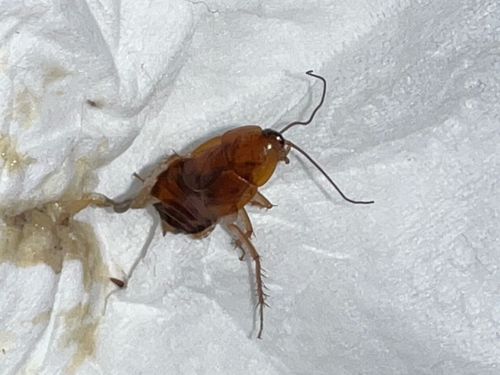Cockroach
Scientific Name: Various species, e.g., Periplaneta americana (American Cockroach), Blattella germanica (German Cockroach)
Order & Family: Order: Blattodea, Family: Varies depending on species (e.g., Blattidae for American Cockroach, Ectobiidae for German Cockroach)
Size: Varies by species, typically from 1/2 inch to 2 inches (1.2 to 5 cm) in length.

Natural Habitat
Found worldwide, especially in warm, humid environments. They thrive in human dwellings, particularly kitchens, bathrooms, basements, and areas with food and moisture. Can also be found outdoors in leaf litter, under logs, and in sewers.
Diet & Feeding
Omnivorous scavengers; they will eat almost anything, including food scraps, decaying organic matter, starches, sweets, grease, meat, pet food, and even non-food items like glue, soap, and hair.
Behavior Patterns
Nocturnal; they are typically active at night and hide in dark, secluded places during the day. They are fast runners and can squeeze into tight spaces. Can reproduce quickly, leading to infestations.
Risks & Benefits
Risks: Can spread bacteria (e.g., Salmonella, E. coli) and other pathogens on food surfaces, triggering allergies and asthma in some individuals, and can contaminate food. They are considered a significant household pest. Benefits: In natural ecosystems, some species play a minor role as decomposers, breaking down organic matter.
Identified on: 8/11/2025